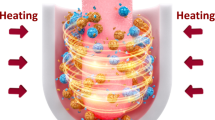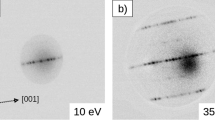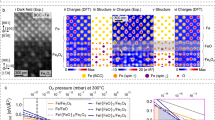Abstract
WHEN iron is oxidized in air, foreign particles on the original surface of the metal will later be found imbedded in the oxide layer. From this observation Fischbeck1 concluded that iron, not oxygen, migrates through the reaction product. Starting from this fact, we have worked out the following simple method for ascertaining the direction of migration in reactions between solid substances.
This is a preview of subscription content, access via your institution
Access options
Subscribe to this journal
Receive 51 print issues and online access
$199.00 per year
only $3.90 per issue
Buy this article
- Purchase on SpringerLink
- Instant access to full article PDF
Prices may be subject to local taxes which are calculated during checkout
Similar content being viewed by others
References
Fischbeck, K., Metallwirtsch., 14, 733 (1935).
Jagitsch, R., and Perlström, G., Arkiv Kemi, Min., Geol., 22A, No. 5 (1946).
Jagitsch, R., and Bengtson, B., Arkiv. Kemi, Min., Geol., 22A, No. 6 (1946).
Jagitsch, R., and Mattsson, B., unpublished results.
Bengtson, B., and Jagitsch, R., Arkiv Kemi, Min., Geol., in the press.
Author information
Authors and Affiliations
Rights and permissions
About this article
Cite this article
JAGITSCH, R. A Method of Using Marked Phase Boundaries. Nature 159, 166 (1947). https://doi.org/10.1038/159166c0
Issue date:
DOI: https://doi.org/10.1038/159166c0



